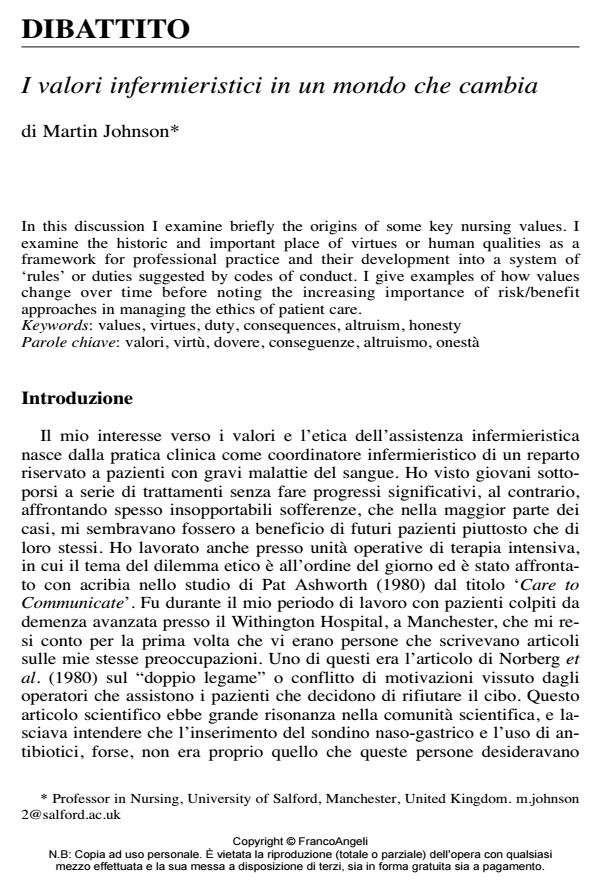I valori infermieristici in un mondo che cambia
Titolo Rivista SALUTE E SOCIETÀ
Autori/Curatori Martin Johnson
Anno di pubblicazione 2013 Fascicolo 2013/3
Lingua Italiano Numero pagine 16 P. 171-186 Dimensione file 133 KB
DOI 10.3280/SES2013-003013
Il DOI è il codice a barre della proprietà intellettuale: per saperne di più
clicca qui
Qui sotto puoi vedere in anteprima la prima pagina di questo articolo.
Se questo articolo ti interessa, lo puoi acquistare (e scaricare in formato pdf) seguendo le facili indicazioni per acquistare il download credit. Acquista Download Credits per scaricare questo Articolo in formato PDF

FrancoAngeli è membro della Publishers International Linking Association, Inc (PILA)associazione indipendente e non profit per facilitare (attraverso i servizi tecnologici implementati da CrossRef.org) l’accesso degli studiosi ai contenuti digitali nelle pubblicazioni professionali e scientifiche
In this discussion I examine briefly the origins of some key nursing values. I examine the historic and important place of virtues or human qualities as a framework for professional practice and their development into a system of ‘rules’ or duties suggested by codes of conduct. I give examples of how values change over time before noting the increasing importance of risk/benefit approaches in managing the ethics of patient care.
Parole chiave:Valori, virtù, dovere, conseguenze, altruismo, onestà
Martin Johnson, I valori infermieristici in un mondo che cambia in "SALUTE E SOCIETÀ" 3/2013, pp 171-186, DOI: 10.3280/SES2013-003013